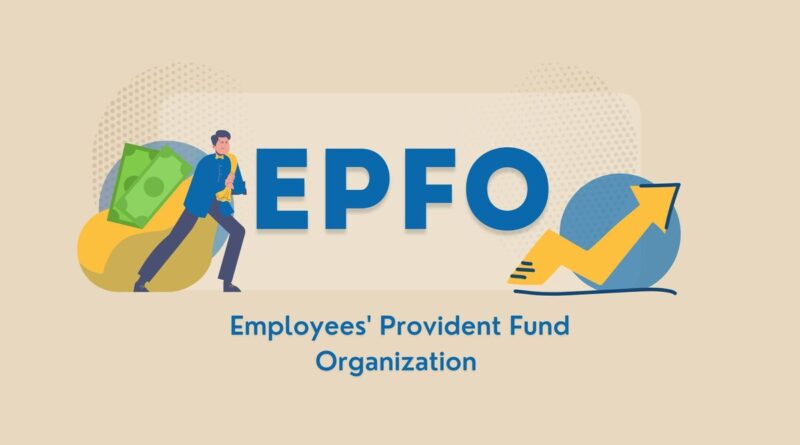Understanding Your EPFO Passbook: Essential Information for Employees
The Employees Provident Fund Organisation or EPFO is the principal regulatory body in India that governs and facilitates the provident funds of employees engaged in several different institutions and sectors across the country. The provident fund, referred to as PF, is a retirement savings scheme available to all salaried employees under which a fraction of the salary is pooled into this fund every month and a comparable contribution is made by the employer. In this context, it’s important to get acquainted with the crucial document known as the EPFO passbook that records and reveals all your PF details.
What is EPFO?
The EPFO passbook is a digital document that provides you with comprehensive details about your PF account. It is akin to the regular bank passbook, displaying the total amount deposited in your PF account with accumulated interests, the total amount of your and your employer’s contribution, and transaction records.
Acquiring your EPFO passbook is an easy task. EPFO provides an e-passbook service which is available at the official website epfindia.gov.in. You can download it by logging in with your Universal Account Number (UAN) and password. After logging in, you will find the option to download the passbook under the “Our Services” tab.
The Importance of the Provident Fund (PF)
It is mandatory to activate and link your UAN with your EPF account as UAN serves as an umbrella for several Member Ids allotted to an individual by several employers. This implies even if you switch jobs, your UAN remains the same and all the PF accounts under different employers can be linked to the same UAN. Once linked, you can view your EPF balance, withdrawal status, claim status, and also download your UAN card and updated EPFO passbook.
Here’s what you can expect to find in your EPFO passbook:
- Member Id: It includes your UAN which stays the same throughout your professional life, irrespective of job transitions.
- The name of the Member: This would be your name as per EPFO records.
- Name of the establishment: This would be the name of your current employer.
- Employer and Employee’s PF contribution: This section provides specific information about the contribution made by both the employer and the employee in the PF account. For instance, if both the employee and the employer contribute an equal amount of ₹1,500 per month, it will be recorded in this section.
- Monthly Deposit & Withdrawal: The EPFO passbook will record the monthly deposits and withdrawals (if any).
- Interest: Annually, the government declares the EPF interest rate. For the financial year 2020-2021, the interest rate is fixed at 8.5%. Your EPFO passbook will display the accumulated interest added to your PF balance.
Key Points to Remember About PF
Before we conclude, it is important to mention that while the Indian financial market offers several kinds of investment avenues with potentially high returns, each one of them also involves a certain degree of risk and volatility, and hence, it is extremely crucial for an investor to understand this aspect.
- Universal Account Number (UAN): Each employee has a unique UAN, which remains the same throughout their career, even if they change jobs. It helps in managing and tracking multiple PF accounts.
- Tax Benefits: Contributions to PF are eligible for tax deductions under Section 80C of the Income Tax Act. The interest earned and the maturity amount are also tax-free, provided certain conditions are met.
- Interest Rate: The interest rate on PF is determined by the government and is generally higher than traditional savings accounts, making it an attractive savings option.
- Withdrawals: PF allows partial withdrawals for specific purposes like medical emergencies, higher education, or purchasing a home. Full withdrawal is permitted upon retirement or if unemployed for more than two months.
- Loans Against PF: Employees can take loans against their PF balance for specific needs, such as housing or medical treatment, providing a financial cushion without resorting to high-interest loans.
In terms of investing in PF, the investor must comprehend all the rules, regulations, terms, procedures, and nitty-gritty related to the PF, specifically and investing in the Indian financial market, in general. Therefore, it is suggested that the investor must gauge all the pros and cons of trading in the Indian financial market.
Find More Details
Discover unparalleled financial convenience with Bajaj Finserv App. This comprehensive mobile application offers a plethora of features to simplify your financial journey. From instant personal loans to hassle-free EMI card management, the app caters to all your financial needs at your fingertips. Seamlessly track your investments, pay EMIs, and manage insurance policies with just a few taps. With secure login and personalized alerts, staying updated on your finances has never been easier. Whether it’s accessing exclusive offers or seeking expert financial advice, Bajaj Finserv App is your ultimate companion for financial empowerment. Download now and embark on a seamless financial journey.
Summary
The EPFO passbook is an essential document for salaried employees in India, helping them keep track of their PF details. Available to download online, the EPFO passbook provides comprehensive details about the PF account, including the total amount in the account, the contributions by the employer and employee, transaction records, and information about the accumulated interest. However, investing in the Indian financial market requires a clear understanding of its complexities and a detailed evaluation of the potential risks. Despite the considerable returns associated with PF investments, they do come with an element of risk. Therefore, all employees are recommended to appraise the pros and cons carefully before making any financial decisions.

